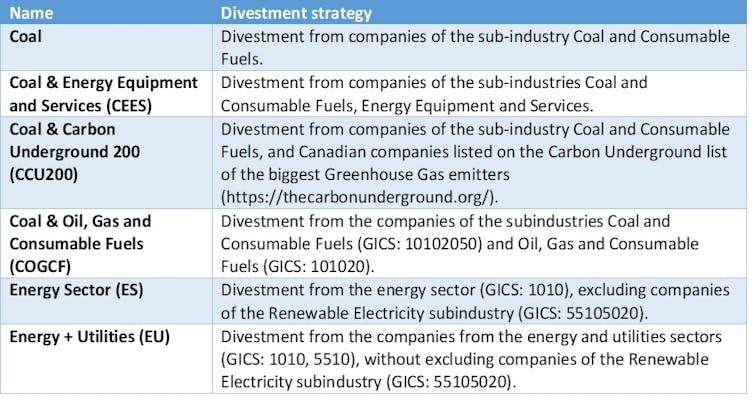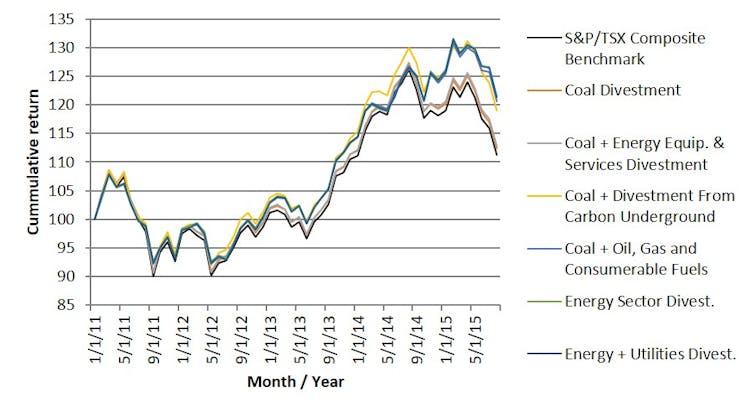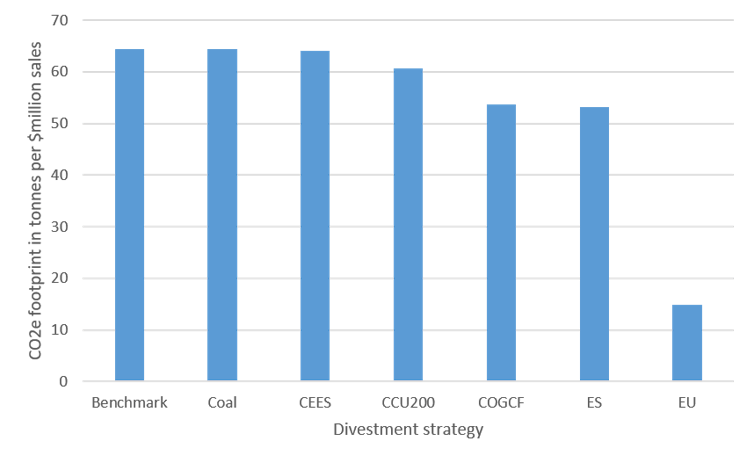After several years without an increase in greenhouse gas emissions, the world experienced a spike in 2017 even though many governments had promised to cut their emissions.
Some NGOs, including 350.org and DivestInvest, promote divestment from the fossil fuel sector as a way to reduce carbon emissions. Furthermore, some investors like Quebec’s Caisse Depot and The New York City Pension Funds have announced that they plan to reduce their fossil fuel investments or divest totally from the sector.
This movement is also part of private and governmental efforts to connect the financial sector with climate finance by both divesting from fossil fuels and reinvesting in a low-carbon economy.
Though the divestment movement’s outreach goes beyond direct financial impacts, questions remain about the financial and carbon-related consequences of divestment.
Pensions in danger?
Without knowing the answers to these questions, institutional investors, such as pension funds, are at risk with regard to fiduciary duty. Some beneficiaries will rightfully ask whether they’ll lose parts of their pension if their pension fund divests from fossil fuels.
What’s more, it’s still unclear what types of investment strategies are able to significantly reduce the carbon footprint of financial portfolios.
Finally, it’s important to understand the consequences of divestment in a fossil fuel-heavy market like Canada. Many argue that divestment in a small and concentrated market increases financial risks.
In a recent study at the University of Waterloo, we analysed what happens if different divestment strategies are applied to the Canadian stock index TSX 260.
We simulated six different divestment strategies presented in the table below, and assessed the financial and carbon-related consequences. The strategies in the table are ranked from low to high by the number of stock divested.

In our simulation, we took the divested funds and distributed them into the remaining sectors. We then used a commonly used stock-market model that predicts whether prices for individual stocks are likely to move up or down. Our simulation showed that after divestment, the value of the portfolio continued to grow, and performed better than the TSX 260.
The following graph compares the financial returns of the different divestment strategies and the original benchmark TSX 260. The black line represents the TSX 260. The other lines show the financial performance of the different investment strategies. The divestment portfolios out-perform the Canadian benchmark with regard to risk-adjusted financial returns.

After demonstrating that divestment portfolios out-perform the Canadian benchmark financially, we present the effect of divestment on the actual carbon footprint of the various divestment strategies.
The carbon footprint consists of the carbon equivalent emissions (CO₂e) of the invested firms per millions of dollars in sales. For instance, if an investor invests money in a high carbon-emitting industry, such as fossil fuels, the carbon footprint of the portfolio is also high. Investing in low-emitting industries results in a portfolio with a low carbon footprint.
The carbon footprint chart below shows the CO₂e emissions of the different divestment strategies, and the benchmark. It demonstrates that excluding all fossil fuel-related industries, including utilities, creates the biggest reduction of the carbon footprint at 77 per cent.

The results of this study suggest the following: Divestment increases risk-adjusted financial returns even in a fossil fuel-heavy financial market such as Canada.
And so the socially responsible investment strategy that is mainly ethically driven also happens to be beneficial from a financial point of view.
Therefore, it can also be applied by investors that are bound to fiduciary duty. Pensioners don’t need to fear their pension income will be reduced if their pension fund managers opt to divest from the fossil fuel sector.
“
Though divestment should not be the only way for investors to address climate change, it seems effective in reducing financial risks, in helping people to invest ethically — and even to increase financial returns.
In addition, divestment helps to reduce the carbon footprint of investment portfolios. This reduction lessens the exposure to carbon-related financial risks, such as the risk of being exposed to costly carbon-related regulations, taxes or mandatory cap-and-trade markets.
Furthermore, divestment strategies create portfolios that attract ethical investors. These types of investors want to reduce their participation in the fossil-fuel industry because of climate change concerns.
![]() Though divestment should not be the only way for investors to address climate change, it seems effective in reducing financial risks, in helping people to invest ethically — and even to increase financial returns.
Though divestment should not be the only way for investors to address climate change, it seems effective in reducing financial risks, in helping people to invest ethically — and even to increase financial returns.
Olaf Weber is Professor of Sustainable Finance and Banking at University of Waterloo and Chelsie Hunt is Project Manager, Monitoring and Impact Measurement at University of Waterloo. This article was originally published on The Conversation.











